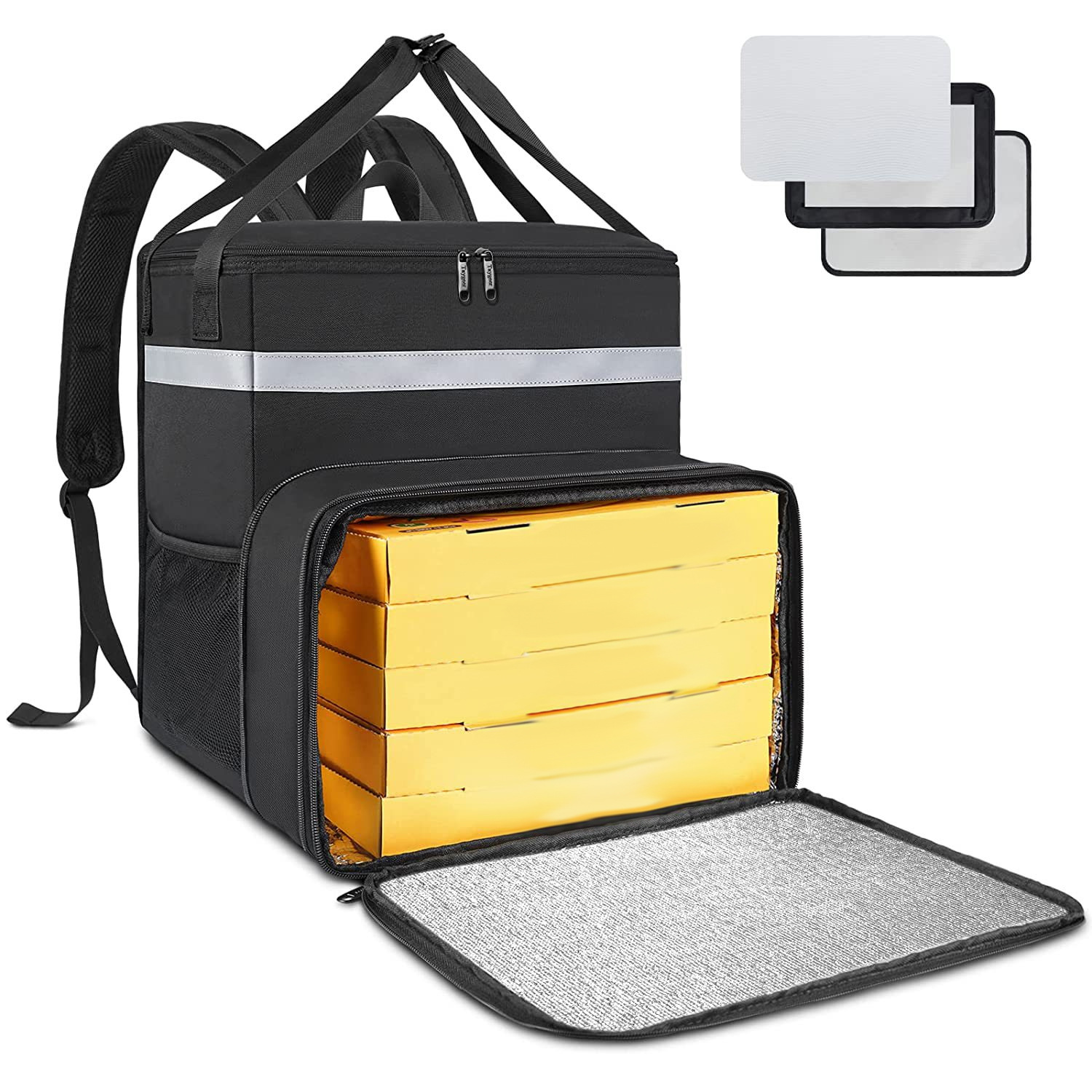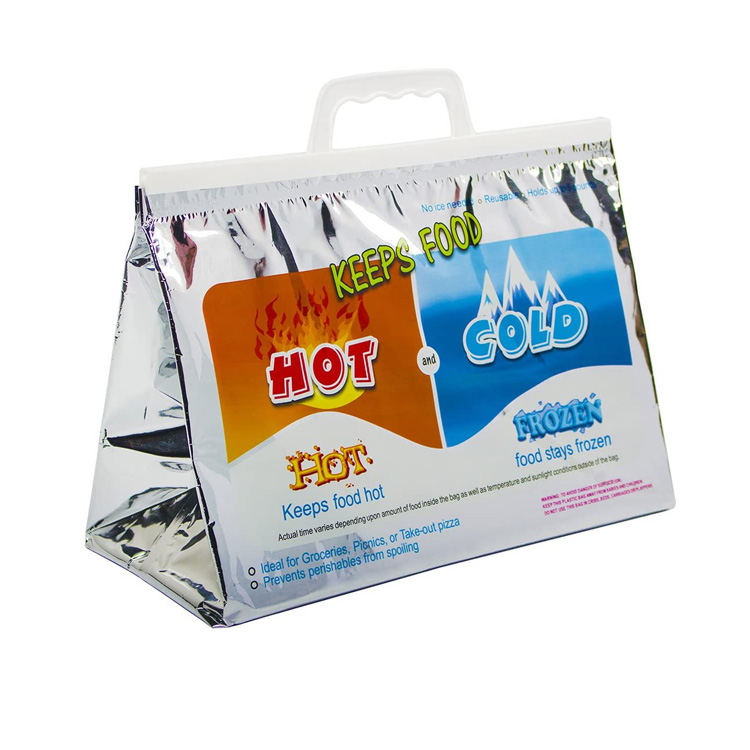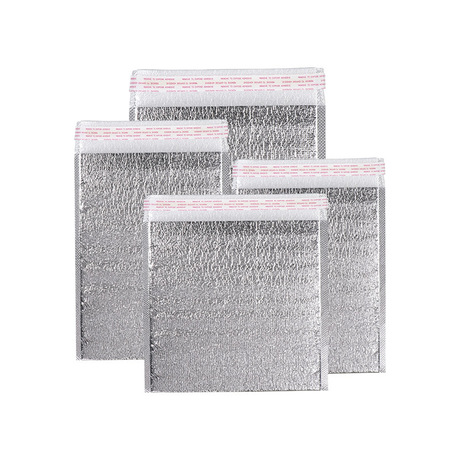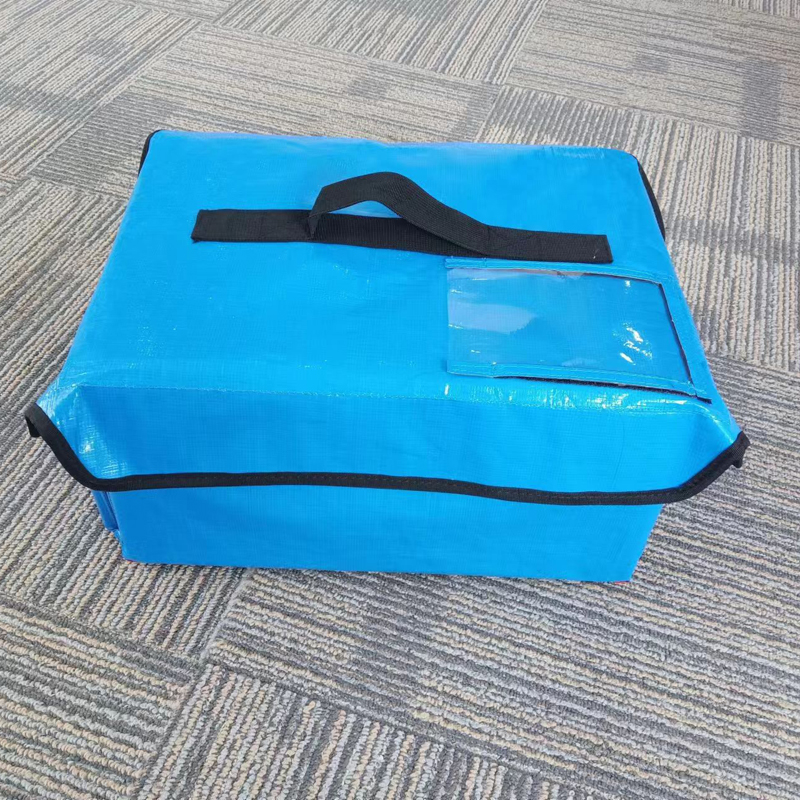Struggling with melting ice cream in the scorching summer? Drinks like cola and beer turning into hot beverages? Or perhaps your hot drinks and food freeze solid in the biting winter wind?
Huizhou Industrial has compiled a guide on how to manage insulation needs. Whether you’re planning a short outdoor trip or looking to keep your groceries at the right temperature, today we recommend a convenient solution—a thermal bag.
When choosing the right thermal bag, you can make your selection based on the types available and your specific needs.
Currently, various supermarkets, tea shops, bakeries, and restaurants offer a wide variety of thermal bags. These bags generally fall into the following categories:
- Aluminum Foil Thermal Bags: The inner layer is made of aluminum foil, while the outer layer is typically non-woven fabric or Oxford cloth. These are suitable for short-term preservation of frozen food, such as for everyday shopping or short-distance transportation. The aluminum foil reflects heat radiation, significantly reducing heat transfer and effectively maintaining the internal temperature.
- EPE Pearl Cotton Thermal Bags: Featuring an inner layer of EPE pearl cotton and an outer layer of non-woven fabric or polyester, these bags are ideal for long-distance transportation and cold chain logistics. EPE pearl cotton offers excellent insulation and cushioning, making it suitable for long-term thermal needs.
- PU Foam Thermal Bags: These have an inner layer of PU foam and an outer layer commonly made of PVC or nylon. They are perfect for situations requiring high insulation performance, such as pharmaceutical cold chain transport and high-end frozen food shipping. The high-density PU foam ensures superior thermal retention.
- Non-Woven Fabric Thermal Bags: The inner layer can be aluminum foil or EPE pearl cotton, with a non-woven fabric outer layer. These are suitable for everyday household use and short shopping trips, being lightweight, portable, and offering moderate insulation.
- PVC Thermal Bags: The inner layer is usually aluminum foil or EPE pearl cotton, with a PVC outer layer. Ideal for outdoor activities like picnics and camping, these bags are waterproof, moisture-proof, and wear-resistant, providing good insulation.
- Cotton Thermal Bags: With an inner layer of aluminum foil or EPE pearl cotton and an outer layer of cotton fabric, these bags are suited for lighter frozen food preservation needs, such as household storage and daily carrying. They are stylish, with a comfortable feel.
- Oxford Cloth Thermal Bags: These feature an inner layer of aluminum foil or EPE pearl cotton and an outer layer of Oxford cloth. Ideal for situations requiring durability, such as long-distance transport or frequent use, Oxford cloth is wear-resistant and tear-resistant, with good thermal performance.
- TPU Thermal Bags: With an inner layer made of TPU material and an outer layer of nylon or polyester, these bags are perfect for high-demand cold chain transport. TPU material offers excellent low-temperature resistance and flexibility, making it suitable for extreme conditions.
- Composite Material Thermal Bags: These are made from a combination of materials, such as PU foam and aluminum foil on the inside, with Oxford cloth or PVC on the outside. These bags are suitable for situations requiring comprehensive performance, like high-end food and pharmaceutical cold chain transport, offering extended and stable thermal retention.
After understanding the types of thermal bags, here are some tips for choosing the right one:
- Identify Your Needs: Consider whether you need it for short-term shopping (under half an hour) or long-term food preservation (several hours or more). Determine if it’s primarily for frozen food, hot meals, or both.
- Check Insulation Performance: Look at the bag’s material—aluminum foil and aerogel typically offer better insulation. Refer to the product’s insulation duration in the specifications.
- Size and Capacity: Choose a thermal bag that matches the quantity and size of the food you usually buy, avoiding one that’s too big or too small.

- Portability: Ensure it has comfortable handles or straps for easy carrying. A lightweight thermal bag will reduce your burden.
- Durability: Choose a bag with sturdy materials and solid stitching to ensure long-term use.
- Sealing: High-quality zippers, closures, or clasps will ensure a good seal, helping to maintain the temperature.
- Ease of Cleaning: Choose a material that’s easy to wipe down and clean to maintain hygiene.
- Design: If the appearance matches your taste, you’ll be more inclined to use it.
- Budget: Within the products that meet your needs, select a thermal bag that fits your budget.

By considering these factors, you’ll be able to choose a thermal shopping bag that satisfies your requirements.
Shanghai Huizhou Industrial Co., Ltd. is a high-tech enterprise in the cold chain industry, headquartered in Shanghai, China, with five production bases nationwide. The company is dedicated to providing professional cold chain temperature control packaging solutions for food and fresh products (fresh fruits and vegetables, beef, lamb, poultry, seafood, frozen foods, baked goods, low-temperature dairy products) and pharmaceutical cold chain customers (biopharmaceuticals, blood products, vaccines, biological samples, in vitro diagnostic reagents, animal health). Our range of thermal bags and boxes includes aluminum foil thermal bags, insulated bags, EPP insulated boxes, VPU insulated boxes, and plastic insulated boxes, designed to meet your needs in various scenarios.
Our company has assembled a professional R&D team and established a 1,400-square-meter laboratory according to CNAS standards, fully equipped with various professional testing and inspection instruments.























